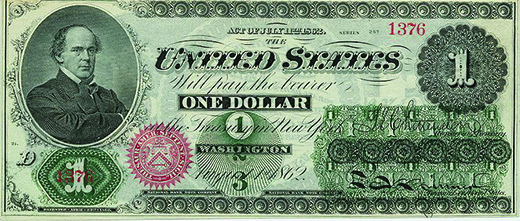| << Chapter < Page | Chapter >> Page > |
Mobilization for war proved to be easier in the North than it was in the South. During the war, the federal government in Washington, DC, like its Southern counterpart, undertook a wide range of efforts to ensure its victory over the Confederacy. To fund the war effort and finance the expansion of Union infrastructure, Republicans in Congress drastically expanded government activism, impacting citizens’ everyday lives through measures such as new types of taxation. The government also contracted with major suppliers of food, weapons, and other needed materials. Virtually every sector of the Northern economy became linked to the war effort.
In keeping with their longstanding objective of keeping slavery out of the newly settled western territories, the Republicans in Congress (the dominant party) passed several measures in 1862. First, the Homestead Act provided generous inducements for Northerners to relocate and farm in the West. Settlers could lay claim to 160 acres of federal land by residing on the property for five years and improving it. The act not only motivated free-labor farmers to move west, but it also aimed to increase agricultural output for the war effort. The federal government also turned its attention to creating a transcontinental railroad to facilitate the movement of people and goods across the country. Congress chartered two companies, the Union Pacific and the Central Pacific, and provided generous funds for these two businesses to connect the country by rail.
The Republican emphasis on free labor, rather than slave labor, also influenced the 1862 Land Grant College Act, commonly known as the Morrill Act after its author, Vermont Republican senator Justin Smith Morrill. The measure provided for the creation of agricultural colleges, funded through federal grants, to teach the latest agricultural techniques. Each state in the Union would be granted thirty thousand acres of federal land for the use of these institutions of higher education.
Congress paid for the war using several strategies. They levied a tax on the income of the wealthy, as well as a tax on all inheritances. They also put high tariffs in place. Finally, they passed two National Bank Acts, one in 1863 and one in 1864, calling on the U.S. Treasury to issue war bonds and on Union banks to buy the bonds. A Union campaign to convince individuals to buy the bonds helped increase sales. The Republicans also passed the Legal Tender Act of 1862, calling for paper money—known as greenbacks —to be printed [link] ). Some $150 million worth of greenbacks became legal tender, and the Northern economy boomed, although high inflation also resulted.

Like the Confederacy, the Union turned to conscription to provide the troops needed for the war. In March 1863, Congress passed the Enrollment Act, requiring all unmarried men between the ages of twenty and twenty-five, and all married men between the ages of thirty-five and forty-five—including immigrants who had filed for citizenship—to register with the Union to fight in the Civil War. All who registered were subject to military service, and draftees were selected by a lottery system ( [link] ). As in the South, a loophole in the law allowed individuals to hire substitutes if they could afford it. Others could avoid enlistment by paying $300 to the federal government. In keeping with the Supreme Court decision in Dred Scott v. Sandford , African Americans were not citizens and were therefore exempt from the draft.

Notification Switch
Would you like to follow the 'U.s. history' conversation and receive update notifications?